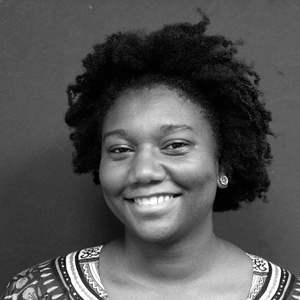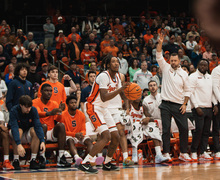Crockett: Amandla Stenberg showcases diversity, feminist ideals in ‘NIOBE’ comic
Rue, one of the few characters of color in “The Hunger Games,” quickly became a fan favorite for young girls. But actress Amandla Stenberg took the spirit of representation one step further with the debut of her first comic earlier this month.
“NIOBE: She is Life” features a young female black warrior named Niobe, who is half-human, half-elf and follow the typical narrative of a chosen hero saving the world. But what makes this comic unique is that it is not only written by a woman of color, but it is illustrated by African-American Marvel artist Ashley A. Woods.
The lead character is based off of Stenberg, who said she relates to the warrior because of their similar racial backgrounds and lifelong quest to discover her inner power and strength. With Stenberg and Woods at the helm, having such big names behind this comic will hopefully contribute toward a greater cultural change in the role of women of color when it comes the artistic side of comics and how women of color are represented.
In this way, Stenberg’s comic represents an important goal: women of color should not only be consumers for the comic book industry, but should play a pivotal role in narratives where their voices have all too often been unheard.
Stenberg does this by successfully targeting girls who are like her – girls who are often misrepresented and fed ideas of what women should look and act like. Her character of Niobe challenges the common “white savior” narrative that is repackaged in legends, stories and modern movies. She created a character who inspires empowerment, especially for girls who don’t usually see themselves represented in the mainstream.
“She is on a path to a destiny that will test her faith and her will, something we can all relate to,” Stenberg said in a statement. “But there’s never been a character quite like her — one who shatters the traditional ideal of what a hero is. We need more bad*ss girls!”
The character of Niobe is more than a tribute to young girls of color, but also to intersectional feminism. Stenberg has been passionate for raising awareness about cultural appropriation and intersectional feminism, as demonstrated in her video project “Don’t Cash Crop On My Cornrows” earlier this year.
People of color in general are not heavily represented in comics. A few heroes come to mind, including Blade and Storm, however these are very few figures in the vast number of illustrated warriors in comic history.
Stenberg’s comic proves to be a way in which women of color can control how they are represented in comics, considering women of color are often fetishized in illustration. Niobe is not a caricature of sexuality as many women in comics are, as she does not wear “sexy” clothing in the released images of her, and she doesn’t feature exaggerated body proportions. The focus of Niobe promotes a holistic view of who she is, and does not seek to have a following based off of her looks.
This is something mainstream comics should take note of. This is not to say that a woman’s sexuality should be shunned away in comics, but when the vast majority of female heroes are wearing revealing clothing, and are drawn by males, it contributes to misogynistic ideas about women.
In following Stenberg’s example, more writers and illustrators of color will no doubt inspire a trend in which more women are telling their stories and breaking the tradition of having one type of hero or warrior placed on a pedestal.
But in giving young girls and boys another choice for a diverse hero, Niobe is already changing the world.
Elaina Crockett is a senior television, radio and film major and African American studies minor. Her column appears weekly. She can be reached at ekcrocke@syr.edu.
Published on November 15, 2015 at 10:54 pm






